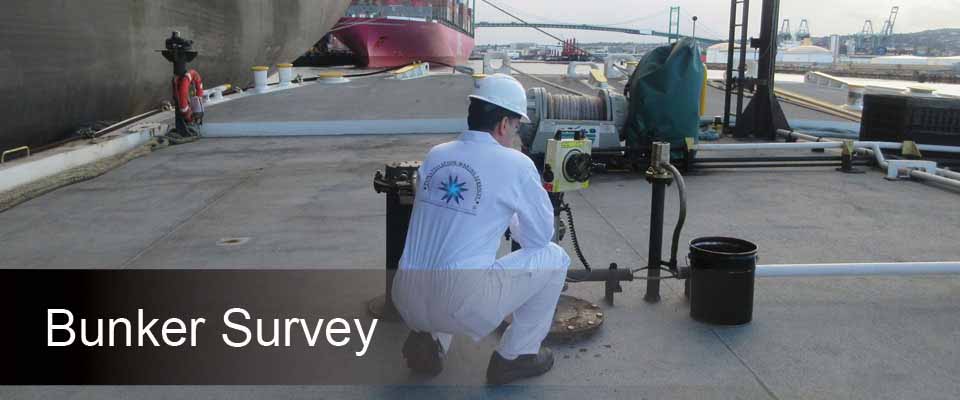Taking Up Fuel for The Ship (Bunkering Operations)
/by Engr. Ramesh KrishnanTaking fuel for the ship is also known as "Bunkering". Bunkering as the ship terminology refers to taking fuel for the ship namely heavy oil (furnace oil), diesel oil and lube oil.
Bunkering of heavy oil for a ship is in Metric tonnes. The heavy oil is the bottom most grade coming out from the distilling tower coming out from a refinery. As the name refers the oil is heavy with a density going upwards from 0.92 gm/cc.
Bunkering on a normal sized ship is of a few hundred tonnes. It's usually takes a few hours to refuel the ship (refuel).
Bunkering is done when the ship is in anchor or when she is afloat at port. The supplier vessel is usually a barge called bunker barge. If you are taking heavy oil bunkers, then all the ships tanks containing heavy oil are sounded. They include heavy oil bunker tanks, settling and service tanks, overflow tank and sludge tank. After sounding the tanks, the total quantity on board, the ship is calculated taking the trim and the list of the ship into consideration.
The above procedure is repeated on the bunker barge the only difference is all the tanks of the bunker barge are sounded. It is to be ascertained from the master or the chief officer which of the tanks in the bunker barge will be used for transferring fuel to the ship.
After the calculations for the quantity of oil on bunker barge are completed, it is to be determined as to what is the quantity of oil to be bunkered on the ship from the bunker barge and chief engineer of the ship. Once the quantity is ascertained then a flexible hose usually 6.0" in diameter is connected from the bunker barge to the ship.
The bunkering begins, the concerned ship's tanks which are being bunkered are sounded at regular intervals and quantity calculated. During bunkering drip sampling is done at the bunker station and fuel collected in clean containers and sealed. Usually four such bottles are used for sample collection. One of these bottles are sent to the laboratory for analysis of the fuel to confirm whether it is meeting the specifications.
Once the bunkering is completed the ships and barge tanks are sounded and calculated to confirm whether ship has received the correct quantity of oil. After the tanks are sounded the tables provided on the ship is used to calculate the quantity received in cubic metres using the trim and heel correction. It is then converted into metric tonnes using the density provided by the bunker barge. Then volume correction factor and weight factor are used to accurately calculate the quantity received on board the ship.
As the quantity of fuel bunkered is in hundreds of metric tonnes a minor miscalculation in checking and calculating can result in loss of 20 to 30 metric tonnes of fuel. This can be a huge loss to the charterers or owners
This is where, Constellation Marine services LLC come in. We have a team of surveyors who are well versed with bunkering, add their expertise. We give prompt service and are available 24x7. We help Masters, and Chief Engineers in overcoming the above problem. We have a satisfied clientele.
It is strongly advisable in the case of heavy oil (VLSFO) to keep those bunker tanks empty, where fresh bunkers are to be taken. The reason is to avoid comingling of fuel ie between old and new heavy oil. Comingling i.e. mixing of fuel sometimes causes sludging which causes fuel oil separators to pack up, filters to choke and damage to engine components.
If the vessel is chartered, then it is usually charterers supply of fuel. If sludging takes place or if the fuel is off spec, then this leads to a claim. Constellation with its extensive experience in Hull and Machinery claims can advise the Charterers and owners the potential pitfalls and how to overcome them.
About the Author:Presently working as Principal Marine Engineer Surveyor with 10 years as chief engineer in a seafaring career spanning 25 years including 7 and a half years' experience with Bureau Veritas as Surveyor. Has worked as Tech. Supdt. for a Singapore based shipping company for a short period of time.
Experienced on B&W, Sulzer, MAN and Wartsila, Bergen, Yanmar, Daihatsu Main engines and Auxiliary engines. Sailed on OBO and a small product carrier as Chief Engineer. Extensive experience in welding and fabrication and also as technical suptd. (Have taken part in a number of dry dockings.)
Conducted ship and industrial surveys as Marine Surveyor and Industrial Surveyor - a good exposure to a wide variety of shore-based companies involved in the manufacture of static and rotary equipment, fire and safety equipment.
No tags for this post.




Leave a Reply
Want to join the discussion?Feel free to contribute!